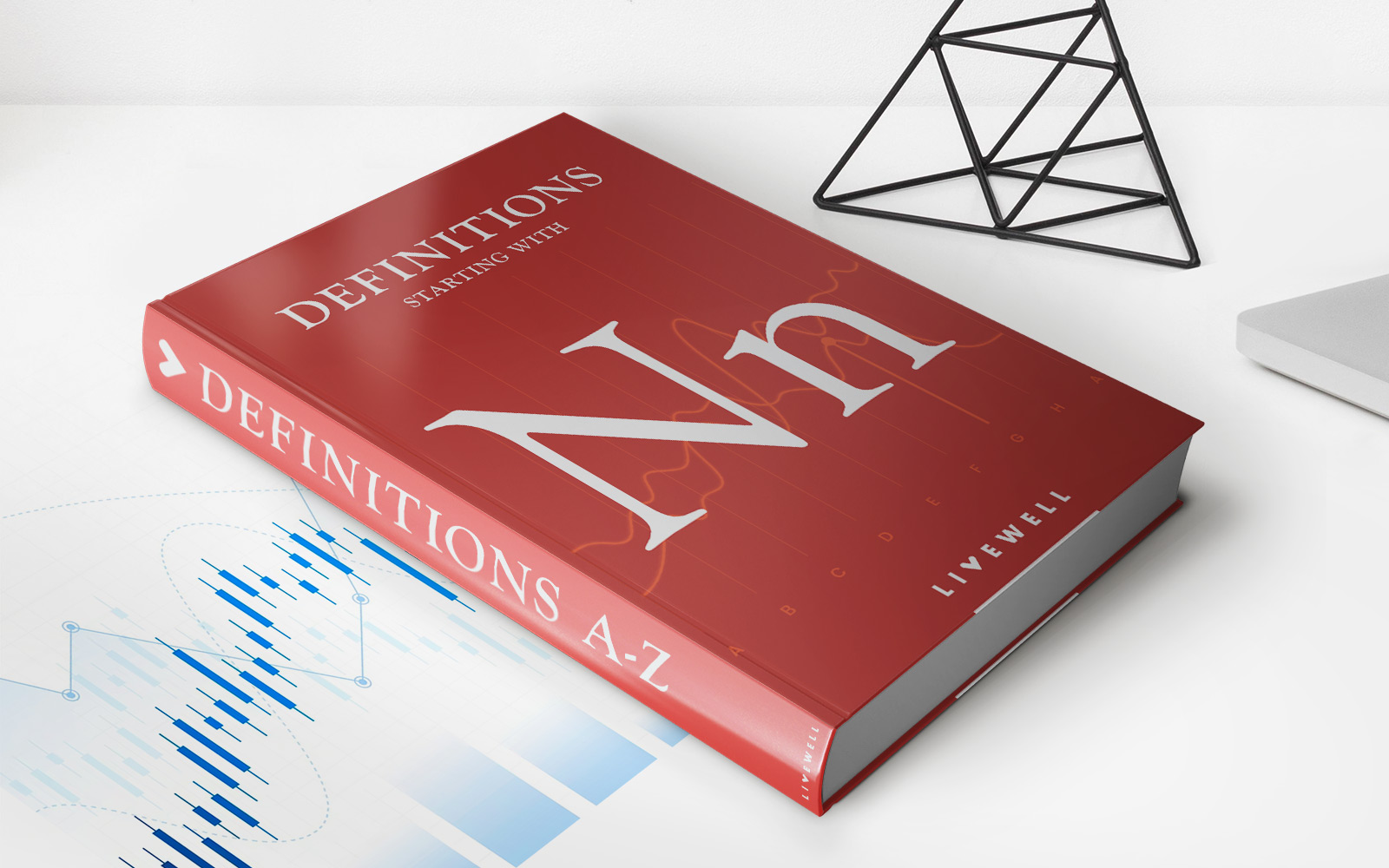

Finance
What Are Liquid And Non-Liquid Assets?
Modified: January 15, 2024
Learn about liquid and non-liquid assets in finance, including their differences, benefits, and how they can impact your financial portfolio.
(Many of the links in this article redirect to a specific reviewed product. Your purchase of these products through affiliate links helps to generate commission for LiveWell, at no extra cost. Learn more)
Table of Contents
- Introduction
- Definition of Liquid Assets
- Examples of Liquid Assets
- Advantages and Disadvantages of Liquid Assets
- Definition of Non-Liquid Assets
- Examples of Non-Liquid Assets
- Advantages and Disadvantages of Non-Liquid Assets
- Comparison between Liquid and Non-Liquid Assets
- Importance of Diversifying between Liquid and Non-Liquid Assets
Introduction
When it comes to managing your finances, it’s important to understand the difference between liquid and non-liquid assets. These two terms refer to the ease with which an asset can be converted into cash. Understanding the characteristics and advantages of each type of asset can help you make informed decisions about your financial planning and investment strategies.
Liquid assets are those that can be quickly and easily converted into cash without significant loss of value. These assets provide you with immediate access to funds in case of emergencies or unexpected expenses. Non-liquid assets, on the other hand, are assets that cannot be easily converted into cash and may require more time and effort to sell.
Having a mix of both liquid and non-liquid assets in your financial portfolio is crucial for achieving financial stability and flexibility. In this article, we will explore the definitions of liquid and non-liquid assets, examine examples of each, discuss their advantages and disadvantages, and highlight the importance of diversifying between the two.
Definition of Liquid Assets
Liquid assets, also known as cash equivalents, are assets that can be easily converted into cash within a short period of time. These assets are typically in the form of cash, bank deposits, or highly liquid financial instruments, such as treasury bills and money market funds.
The defining characteristic of liquid assets is their high level of liquidity, meaning they can be quickly and easily sold or exchanged for cash without a significant loss in value. This liquidity is desirable because it provides you with the ability to access funds quickly in case of emergencies, unexpected expenses, or investment opportunities.
In addition, liquid assets often have a high degree of marketability, meaning they can be sold in active and well-established markets with minimal transaction costs and price impact. This makes them more attractive to investors and allows for efficient buying and selling.
Examples of liquid assets include cash on hand, checking and savings accounts, money market accounts, short-term certificates of deposit (CDs), and easily tradable securities such as stocks and bonds. These assets can be easily converted into cash within a matter of days, if not instantly, allowing you to have immediate access to funds when needed.
Examples of Liquid Assets
Here are some common examples of liquid assets:
- Cash: Physical currency, including banknotes and coins, is the most liquid form of asset and can be accessed immediately for any purpose.
- Bank Deposits: Money held in checking and savings accounts is highly liquid and can be easily withdrawn or transferred.
- Money Market Accounts: These accounts invest in short-term, low-risk securities and provide a combination of liquidity and interest earnings.
- Certificates of Deposit (CDs): Short-term CDs with maturities of less than six months can be easily liquidated without penalty.
- Treasury Bills (T-Bills): These are short-term debt instruments issued by governments and can be easily bought and sold on the secondary market.
- Stocks: Shares of publicly-traded companies can be sold on stock exchanges, providing the ability to quickly convert them into cash.
- Bonds: Bonds are debt instruments issued by governments and corporations. Depending on the terms, they can be traded and sold relatively easily.
These examples illustrate the various types of assets that are considered liquid due to their ability to be converted into cash quickly and without significant loss in value. It’s important to note that the liquidity and marketability of these assets may vary depending on market conditions and other factors.
Advantages and Disadvantages of Liquid Assets
Liquid assets offer several advantages and disadvantages that you should consider when managing your finances:
Advantages:
- Immediate Access to Funds: The primary advantage of liquid assets is the ability to access cash quickly. This provides a sense of financial security, as you can readily address unexpected expenses or emergencies without having to resort to borrowing or selling other assets.
- Flexibility and Convenience: Liquid assets provide flexibility in managing your financial affairs. You have the freedom to make timely investments or take advantage of opportunities as they arise.
- Liquidity during Market Downturns: During economic downturns or market turmoil, liquid assets can provide a source of stability. They can be easily converted into cash, reducing financial stress and providing a buffer against potential losses in other investments.
- Lower Transaction Costs: Selling liquid assets typically incurs lower transaction costs compared to non-liquid assets. This is due to the active and well-established markets in which these assets are traded, resulting in greater ease and efficiency in buying and selling.
Disadvantages:
- Lower Potential Returns: Liquid assets tend to offer lower returns compared to riskier and less liquid investments. They are generally considered safe and conservative, but this also means their potential for significant growth is limited.
- Inflation Risk: Holding a significant portion of your assets in liquid form may expose you to inflation risk. Inflation erodes the purchasing power of your cash holdings over time, reducing their real value.
- Opportunity Cost: By holding a large portion of your portfolio in liquid assets, you may miss out on potential returns from other investment opportunities that offer higher risk-adjusted returns in the long run.
It’s important to strike a balance between the convenience and security of liquid assets and the potential for higher returns offered by other investment options. Consider your financial goals, risk tolerance, and time horizon when determining the appropriate allocation of liquid assets in your overall financial plan.
Definition of Non-Liquid Assets
Non-liquid assets, also known as illiquid assets, are assets that are not easily converted into cash without incurring significant time and effort or without incurring a loss in value. These assets typically require more time to sell, and may have a limited market or buyer pool.
Non-liquid assets can take various forms, including physical assets such as real estate, vehicles, and collectibles. They can also include financial assets such as long-term investments, private equity, and certain types of bonds.
The defining characteristic of non-liquid assets is their lack of marketability and ease of conversion into cash. Unlike liquid assets, which can be quickly sold or exchanged at minimal transaction costs and price impact, non-liquid assets often require a longer time frame and sometimes the involvement of professionals to facilitate the sale.
It’s important to note that the liquidity of non-liquid assets can vary significantly depending on market conditions, demand, and the specific characteristics of the asset itself.
Examples of Non-Liquid Assets
Non-liquid assets encompass a wide range of assets that are not easily converted into cash. Here are some examples:
- Real Estate: Property, such as houses, apartments, land, and commercial buildings, is considered a non-liquid asset. Selling real estate typically takes time due to the legal processes involved and the need to find suitable buyers.
- Vehicles: Automobiles, motorcycles, boats, and other vehicles are non-liquid assets as they require a buyer and transaction process to convert them into cash. The selling process can often take time and effort.
- Collectibles: Items such as artwork, antiques, rare coins, stamps, and vintage memorabilia are considered non-liquid assets. These items require specialized markets and buyers, making them more challenging to sell quickly.
- Private Equity: Investments in privately-held companies, venture capital funds, and private equity funds are non-liquid assets. These investments typically have a longer holding period and limited liquidity due to the nature of the investment vehicles.
- Long-Term Bonds: Certain types of bonds with longer maturities, such as government or corporate bonds, may be less liquid compared to short-term bonds. Selling these bonds before maturity can result in price discounts or other constraints.
- Retirement Accounts: Retirement accounts such as 401(k) plans, pension funds, and individual retirement accounts (IRAs) have restrictions on withdrawing funds before reaching a specific age. This lack of immediate access limits their liquidity.
- Business Partnerships: Owning shares or stakes in privately-held companies or limited partnerships can be considered non-liquid assets. Selling or transferring ownership often requires approval from other partners or an extensive negotiation process.
These examples illustrate the various types of assets that are considered non-liquid due to the challenges and longer timeframes associated with converting them into cash. It’s important to carefully consider the liquidity constraints of these assets when making investment decisions and managing your financial strategy.
Advantages and Disadvantages of Non-Liquid Assets
Non-liquid assets offer several advantages and disadvantages that should be considered when evaluating your financial portfolio:
Advantages:
- Potential for Higher Returns: Non-liquid assets can provide the opportunity for higher returns compared to liquid assets. Investments such as real estate and private equity have the potential for long-term growth and income generation.
- Diversification: Non-liquid assets can offer diversification benefits by providing exposure to different asset classes and markets. This can help reduce the overall risk of the portfolio and increase the potential for returns.
- Inflation Hedge: Certain non-liquid assets, such as real estate or commodities, can serve as a hedge against inflation. As prices rise, the value of these assets may appreciate, helping to preserve your purchasing power over time.
- Tax Advantages: Non-liquid assets often come with tax advantages. For example, real estate investments may qualify for tax deductions, and retirement accounts offer tax-deferred growth until withdrawal.
Disadvantages:
- Lack of Liquidity: The primary disadvantage of non-liquid assets is their limited liquidity. Selling these assets may not be as swift or easy as liquid assets, requiring time, effort, and potentially involving professionals. This can hinder access to funds when needed.
- Price Volatility: Some non-liquid assets, such as real estate and collectibles, may experience price volatility. The value of these assets can fluctuate, and it may take longer to find a buyer willing to pay the desired price.
- Transaction Costs: Selling non-liquid assets often involves higher transaction costs compared to liquid assets. Legal fees, brokerage commissions, and other expenses can eat into the overall returns from the sale.
- Risk of Market Downturns: Non-liquid assets are also subject to market risks. During economic downturns or unfavorable market conditions, selling these assets at a fair price may become more challenging, potentially leading to reduced returns.
It’s important to carefully weigh the advantages and disadvantages of non-liquid assets to determine their suitability in your investment strategy. Consider your financial goals, time horizon, risk tolerance, and overall portfolio diversification when allocating funds to these types of assets.
Comparison between Liquid and Non-Liquid Assets
When analyzing liquid and non-liquid assets, it’s essential to understand the key differences between the two. Here’s a comparison of the two asset types:
Liquidity:
The primary distinction between liquid and non-liquid assets lies in their liquidity. Liquid assets can be easily and quickly converted into cash without significant loss in value, while non-liquid assets require more time, effort, and potentially incur expenses to sell. Liquid assets offer immediate access to funds, providing financial flexibility and security, whereas non-liquid assets may require planning and time to access their value.
Risk and Return:
Liquid assets, such as cash or highly tradable securities, tend to be lower-risk and offer lower potential returns compared to non-liquid assets. Non-liquid assets, such as real estate or private equity investments, typically have higher risk profiles, but potentially higher returns over the long term. Balancing the risk-return trade-off is crucial in portfolio diversification.
Marketability:
Liquid assets benefit from active and well-established markets, making buying and selling relatively seamless, resulting in lower transaction costs. Non-liquid assets often have a limited market, requiring specialized buyers and potentially longer transaction times, which can incur higher costs and impact the selling price.
Volatility and Stability:
Liquid assets tend to be more stable and less prone to price volatility compared to non-liquid assets, which can experience significant fluctuations. Non-liquid assets, such as real estate or collectibles, may be susceptible to market conditions and economic factors that influence their value.
Diversification:
Both liquid and non-liquid assets play a role in portfolio diversification. Liquid assets provide immediate access to cash and act as a safety net, while non-liquid assets offer the potential for higher returns and diversify risk by investing in different asset classes. Striking the right balance between the two is crucial for a well-rounded portfolio.
Time Horizon:
The time horizon for your financial goals is an important consideration in selecting between liquid and non-liquid assets. Liquid assets are suitable for short-term needs and emergencies, while non-liquid assets are often better suited for long-term investment strategies, taking into account the potential time required to sell and reap the benefits.
It’s essential to consider your financial objectives, risk tolerance, and time horizon when weighing the pros and cons of liquid and non-liquid assets. A diversified portfolio that includes a mix of both can provide liquidity, stability, and the potential for growth, helping you achieve your financial goals.
Importance of Diversifying between Liquid and Non-Liquid Assets
Diversification is a fundamental principle of successful financial management, and it includes diversifying not only among different asset classes but also between liquid and non-liquid assets. Here’s why diversifying between these two types of assets is crucial:
1. Risk Mitigation: Diversification helps mitigate the risk associated with portfolio volatility. Liquid assets provide stability and liquidity in times of market turmoil, while non-liquid assets have the potential for higher returns over the long term. By diversifying between the two, you can strike a balance between stability and growth, reducing the overall risk in your portfolio.
2. Enhancing Flexibility: Holding a mix of liquid and non-liquid assets provides financial flexibility. Liquid assets can be readily accessed in case of emergencies, unexpected expenses, or investment opportunities. Non-liquid assets, on the other hand, offer the potential for long-term growth and income generation. The combination of both provides flexibility to navigate different financial situations.
3. Capitalizing on Opportunities: Diversifying into non-liquid assets allows you to seize opportunities that may not be available in the liquid asset market. Investments such as real estate, private equity, or long-term bonds can offer higher potential returns but require longer investment horizons. By allocating a portion of your portfolio to these assets, you can capitalize on opportunities for growth and diversify your income streams.
4. Inflation Protection: Non-liquid assets, such as real estate or commodities, can act as a hedge against inflation. As prices rise, these assets may appreciate, preserving your purchasing power over time. Including them in your portfolio can help safeguard against the erosive effects of inflation.
5. Long-Term Financial Planning: Diversifying between liquid and non-liquid assets is beneficial for long-term financial planning and wealth preservation. A well-balanced portfolio allows you to access cash when needed, while also positioning your investments for potential growth in different market cycles. It provides stability and the potential for increasing your net worth over time.
6. Achieving Personal Goals: Diversifying between liquid and non-liquid assets ensures that your investment strategy aligns with your personal goals. It allows you to balance short-term needs for liquidity and long-term objectives for wealth accumulation and financial independence.
7. Managing Market Volatility: Diversifying between liquid and non-liquid assets helps manage market volatility. Liquid assets provide stability and can be used to rebalance your portfolio during market downturns, while non-liquid assets offer the potential for higher returns when markets are performing well.
8. Minimizing Opportunity Costs: By diversifying between liquid and non-liquid assets, you can minimize opportunity costs. While liquid assets offer immediate access to cash, non-liquid assets have the potential for higher returns. Finding the right balance between the two ensures you have enough liquidity for immediate needs while not missing out on the growth potential of non-liquid assets.
Diversifying between liquid and non-liquid assets is crucial for achieving financial stability, flexibility, and growth. By considering your financial goals, risk tolerance, and time horizon, you can effectively allocate your assets and create a diversified portfolio that meets your unique needs.














